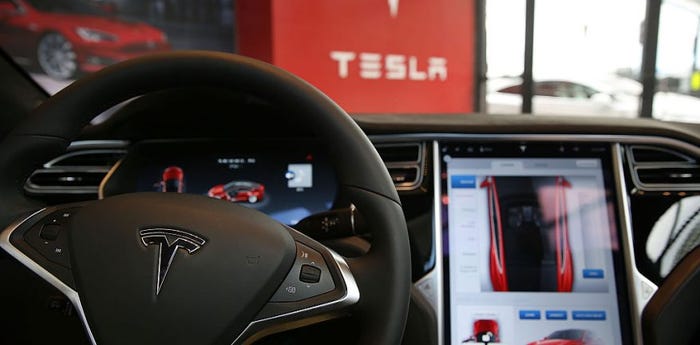Hundreds of Tesla Owners Report Phantom Braking
Tesla’s self-driving tech continues to be under increased scrutiny
June 6, 2022

Tesla’s Autopilot driver-assistance system is attracting more negative headlines after it emerged that 758 owners have complained to U.S. regulators about incidents of “phantom braking” – where the car has suddenly stopped for no apparent reason.
The alarming figure was revealed in an information request letter that has been sent to Tesla by the National Highway Traffic Safety Administration and was posted on the NHTSA website.
In the 14-page letter, dated May 4, the agency asks the automaker to supply all reports it has received of phantom braking, plus details of any crashes, injuries, deaths and property damage claims. It also inquires whether Tesla’s Full Self Driving mode – which some campaigners are trying to ban – and automatic emergency braking systems were active at the time of any incident.
Phantom braking happens when a driver assistance system applies the brakes for no clear reason. Sometimes the system has falsely detected what it thinks might be an object on the road and brakes in an attempt to avoid it. Sudden stops can then present problems for vehicles following behind, increasing the likelihood of a crash.
While there have been reports circulating of phantom braking on Teslas for some time, the agency only began officially investigating it on the Model 3 and Model Y last February after receiving 354 complaints. The NHTSA’s inquiries cover an estimated 416,000 vehicles from the 2021 and 2022 model years, and earlier this year the agency said it had no reports of crashes or injuries.
The level of detail the letter asks Tesla to provide is extensive. Among the requests for each episode of phantom braking are: “Software, firmware and hardware versions in place at the time of the incident, along with vehicle and mileage and date of installation.” The agency also asks for the speeds before and after braking, the average deceleration, the maximum deceleration, whether video exists and whether an obstacle was detected.
The request for information on warranty claims includes the names of owners who made them and the nature of any repairs that may have been carried out. The NHTSA has also requested details on Tesla’s sensors and wants to know if the company has conducted any investigations into the braking problems and performed any modifications as a result.
The agency is also keen to know more about the “robustness” of the automaker’s testing program, with particular queries on how metal bridges and S-shape curves, oncoming traffic, large trucks and more are detected, and inquiries regarding how the camera system copes with horizon glare, dirt, bad weather and more. Tesla has until June 20 to respond.
In recent months, Tesla’s self-driving tech has come under increasing scrutiny. There have been suggestions the Autopilot and Full Self Driving labels are giving drivers a false sense of security, with billionaire U.S. businessman Dan O’Dowd campaigning for FSD to be banned, while the NHTSA is conducting several investigations into crashes involving Teslas.
Tesla CEO Elon Musk has crossed swords with the NHTSA before, famously calling the agency “the fun police” earlier this year.
About the Author(s)
You May Also Like



.png?width=700&auto=webp&quality=80&disable=upscale)
.png?width=700&auto=webp&quality=80&disable=upscale)
.png?width=300&auto=webp&quality=80&disable=upscale)
.png?width=300&auto=webp&quality=80&disable=upscale)
.png?width=300&auto=webp&quality=80&disable=upscale)
